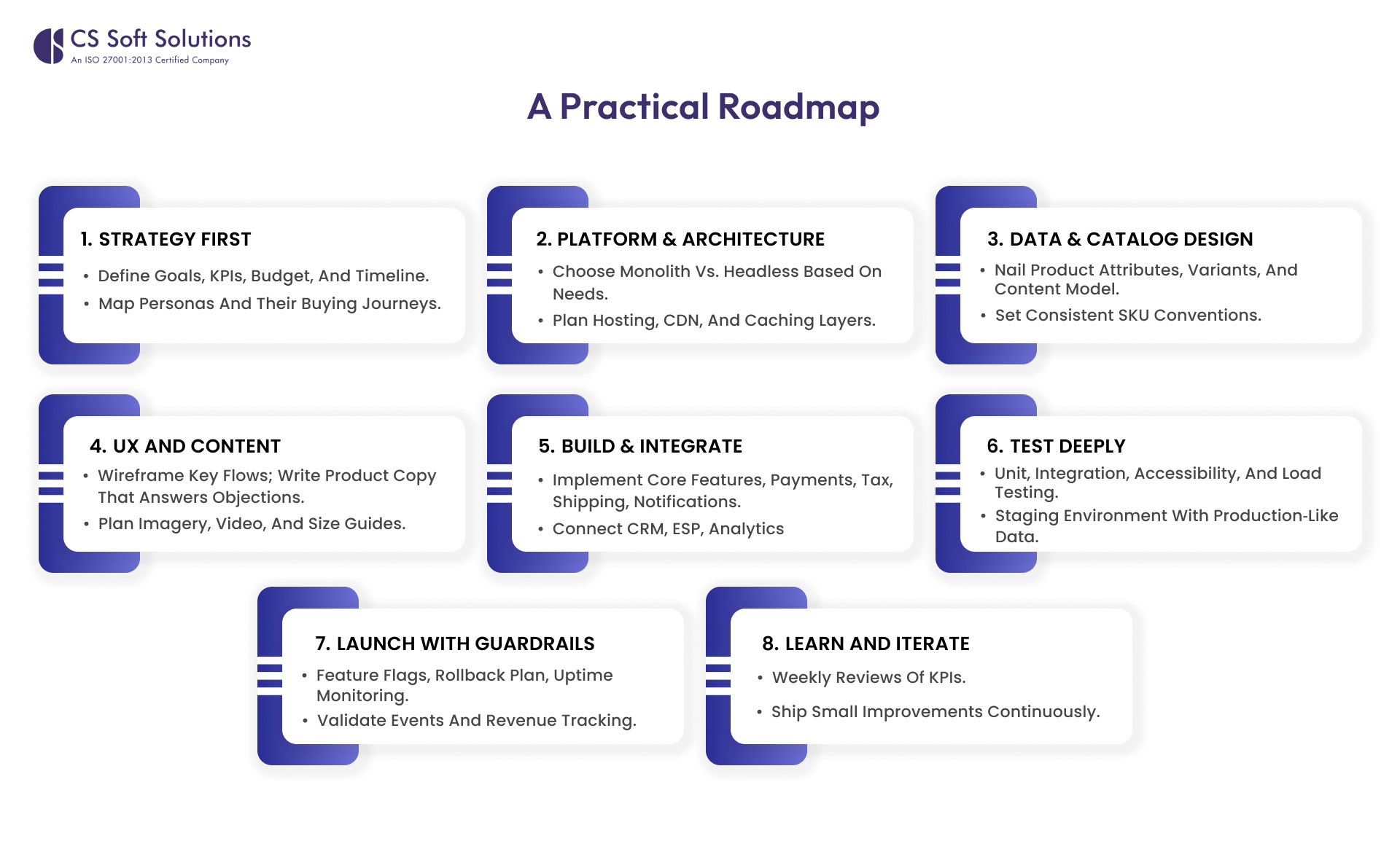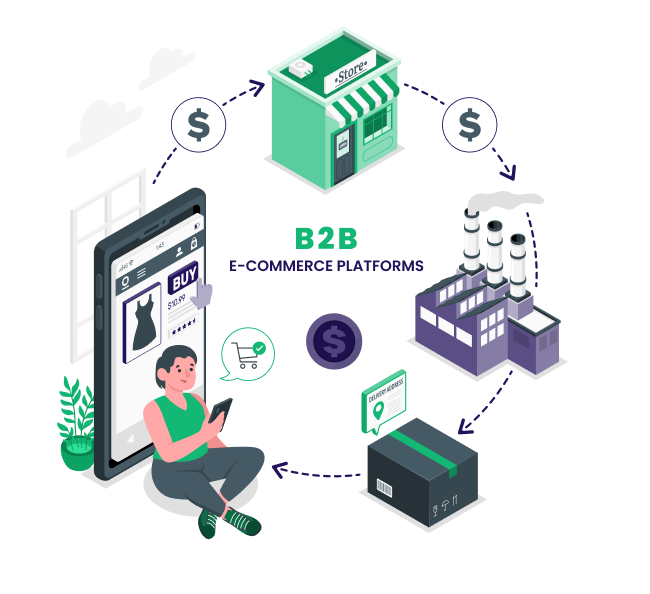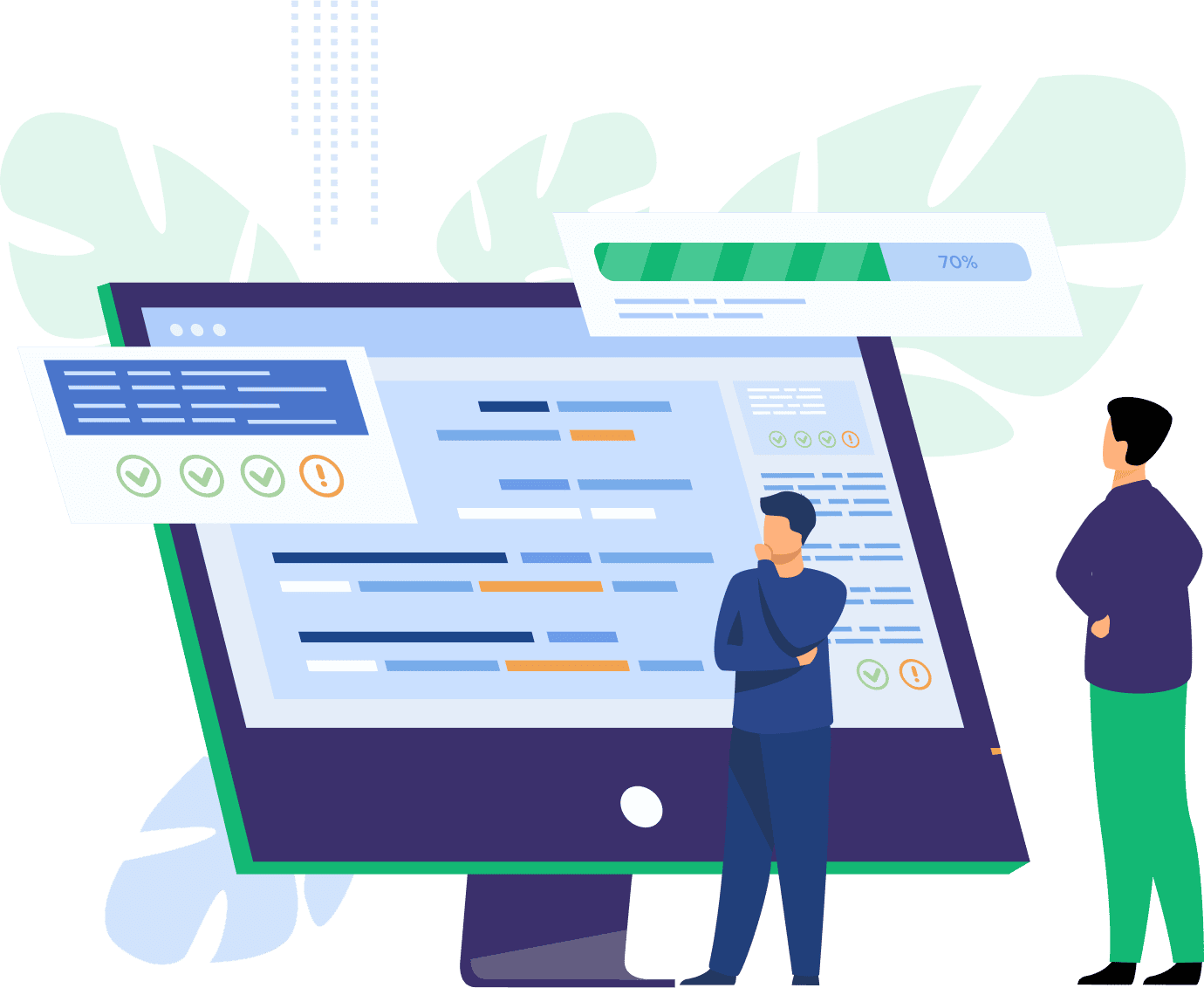
Why Your Store’s Build Matters More Than Your Theme
It is possible to re-skin a site many times, but when the foundation is weak, then no growth occurs. Solid development shapes:
- Fastness: Pages that are quicker in load boost conversions and search results. A difference between a sale and a tab closed can be a second shaved off load time.
- Mobile experience: The majority of shoppers window shop through phones. Reactive designs, sharp images, and touch-friendly navigation are not an option.
- Security and trust: Checkout confidence is achieved through the use of SSL, PCI-compliant payment flows, and displayable trust indicators.
- Scalability: Your store should not fall when sales are spiking or campaigns are going on. Considerate design will avoid frail development.
Indeed, development is a determining factor of how well your marketing dollars perform.
E‑Commerce Store Development, Defined (Beyond the Buzzword)
E-Commerce Store Development is a complete process of planning, construction, integration of your systems, and maintenance of your store. That includes:
- Architecture: Monolith vs. Headless, Server Setup, and CDN Strategy.
- Platform choice: Magento/OpenMage and WooCommerce to custom.
- UX and UI: Search relevance, product discovery, filters, and checkout process.
- Data Models: There are different factors like SKUs, variants, bundles, inventory, and pricing rules.
- Integrations: It includes shipping, tax, payment gateway, ERP, CRM, and ESP.
- Compliance: Most importantly, PCI, data privacy, and accessibility.
- Analytics: Attribution, event tracking, and testing.
You must combine all those components successfully and end up with a store that is easy to use and profitable as well.
Choosing a Stack: Where PHP Still Shines
PHP is here to stay in business because there is a reason why a specific framework is still a staple in commerce: ecosystem maturity. Whether you are thinking of a PHP development company, you tend to be inclined towards a stack providing:
- Battle‑tested platforms: Both the Magento/OpenMage and the WooCommerce use platforms that support millions of stores with rich libraries of plugins.
- Rapid development: Frameworks such as Laravel or Symphony enable custom functionality to be deployed more quickly and maintainably.
- Cost efficiency: The broad pool of talent and so much available in the community can help manage finances.
- Cost efficiency: Select a shared host, or containerized cloud, whatever you wish.
Does it imply that PHP is correct at all times? Not necessarily. Full headless solutions, Node.js, or Python are both compatible when real-time personalization is required on a large scale or where you adopt a Jamstack style. It is wiser to fit needs to abilities and not the other way round.
Bake SEO Into the Build, Not After
SEO isn’t a coat of paint. It is ingrained into development decisions:
- Core Web Vitals: Image optimization (WebP/AVIF), lazy loaded, and critical CSS.
- On‑site search: Clean URLs and metadata, Programmatic titles, meta descriptions, and canonical tags.
- Filters that matter: Product, Review, Breadcrumb, and FAQ schema to serve optional SERP features.
- Internal search: Synonyms, typo tolerance, relevance tuning, because searchers are buyers.
A well‑coded store makes it easy for search engines to understand your catalog and for humans to trust it.
Conversion Starts With Discovery, Not the Checkout Button
People can’t buy what they can’t find. Build discovery paths that feel natural:
- Navigation: Category labels in plain language. Limit top‑level items; use clear mega menus.
- On‑site search: Autocomplete, recent searches, and smart ranking (margin, inventory, popularity).
- Filters that matter: Size, color, material, price, availability, and make them fast.
Product pages that answer questions:
- Real dimensions and materials
- Clear photography and short demo clips
- Shipping/returns above the fold
- Social proof: ratings and Q&A
Then smooth the path to purchase: one‑page checkout, guest checkout, multiple payment options, and address validation. Micro‑friction kills momentum; trim it relentlessly.
Content That Sells Without Shouting
High‑intent traffic is great; helpful content turns it into repeat customers:
- Guides and comparison pages: “Which hiking backpack fits a 2‑day trip?” beats “New arrivals.”
- How‑to content: Sizing, care, installation, less buyer’s remorse, fewer returns.
- UGC: Reviews and customer photos build trust you can’t fake.
- Editorial SEO: Category intros, FAQs, evergreen posts that answer real questions.
Your store becomes a resource, not just a catalog.
When a PHP Development Company Makes Sense
There are scenarios where partnering with a PHP Development Company is the pragmatic choice:
- You need Magento/WooCommerce expertise for complex catalogs or global stores.
- You want custom logic in Laravel/Symfony bundling rules, B2B pricing, or unique fulfillment flows.
- You prefer open‑source flexibility and long‑term cost control.
- You’re integrating with PHP‑native systems or legacy platforms already in your stack.
What to ask in discovery:
- Architecture: “How would you handle scaling, caching, and edge delivery?”
- Code quality: “Show us your standards, linters, tests, CI/CD.”
- Security: “What’s your playbook for vulnerabilities and patching?”
- Performance: “What are your Core Web Vitals targets and how do you measure them?”
- Ownership: “Who owns the code? How is documentation handled?”
- Support: “What’s included post‑launch SLA, monitoring, error budgets?”
Clear answers now prevent expensive surprises later.
A Practical Roadmap (So You Don’t Get Lost)
1) Strategy first
- Define goals, KPIs, budget, and timeline.
- Map personas and their buying journeys.
2) Platform & architecture
- Choose monolith vs. headless based on needs.
- Plan hosting, CDN, and caching layers.
3) Data & catalog design
- Nail product attributes, variants, and content model.
- Set consistent SKU conventions.
4) UX and content
- Wireframe key flows; write product copy that answers objections.
- Plan imagery, video, and size guides.
5) Build & integrate
- Implement core features, payments, tax, shipping, and notifications.
- Connect CRM, ESP, analytics.
6) Test deeply
- Unit, integration, accessibility, and load testing.
- Staging environment with production‑like data.
7) Launch with guardrails
- Feature flags, rollback plan, and uptime monitoring.
- Validate events and revenue tracking.
8) Learn and iterate
- Weekly reviews of KPIs.
- Ship small improvements continuously.
Common Pitfalls (And How to Dodge Them)
- Shiny‑object platform shopping: Decide based on requirements, not trends.
- No single source of truth: Inventory and pricing must sync across channels.
- Over‑pluginning: Each add‑on has a performance and security cost; custom code may be cleaner.
- Ignoring ops: Returns, refunds, and customer service workflows deserve as much attention as the checkout.
The Takeaway
Growing online presence isn’t about louder ads; it’s about E‑Commerce Store Development that respects your customers’ time. Fast pages. Clear paths. Honest content. Safe checkout. And a build that’s easy to evolve. You should partner with a reliable PHP development company like CS Soft Solutions India Pvt. Ltd. to let your goal shape the stack.













